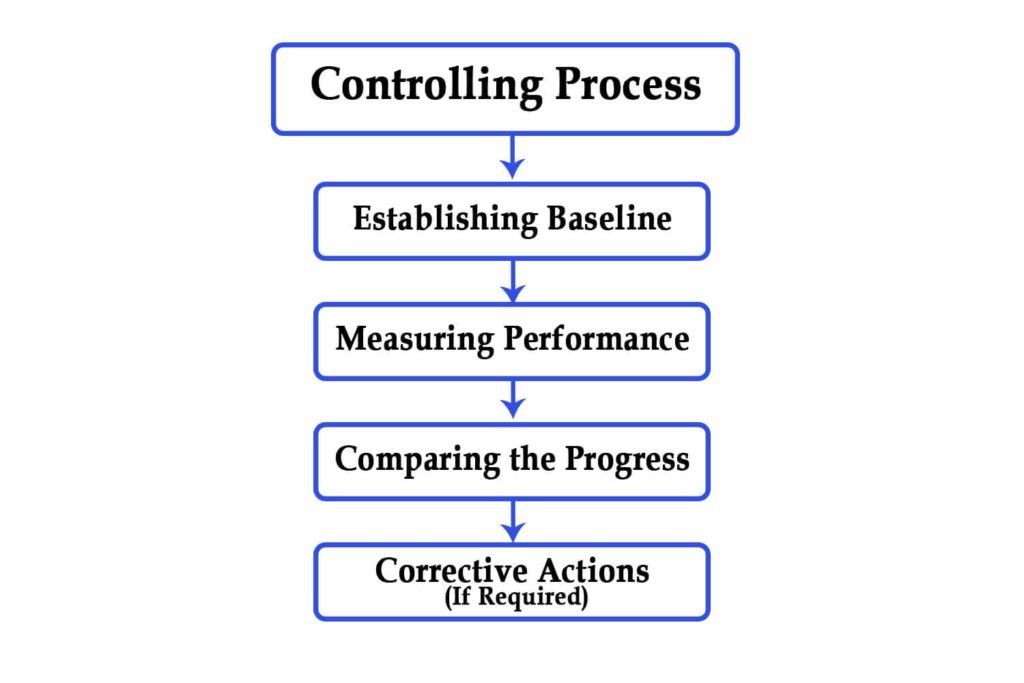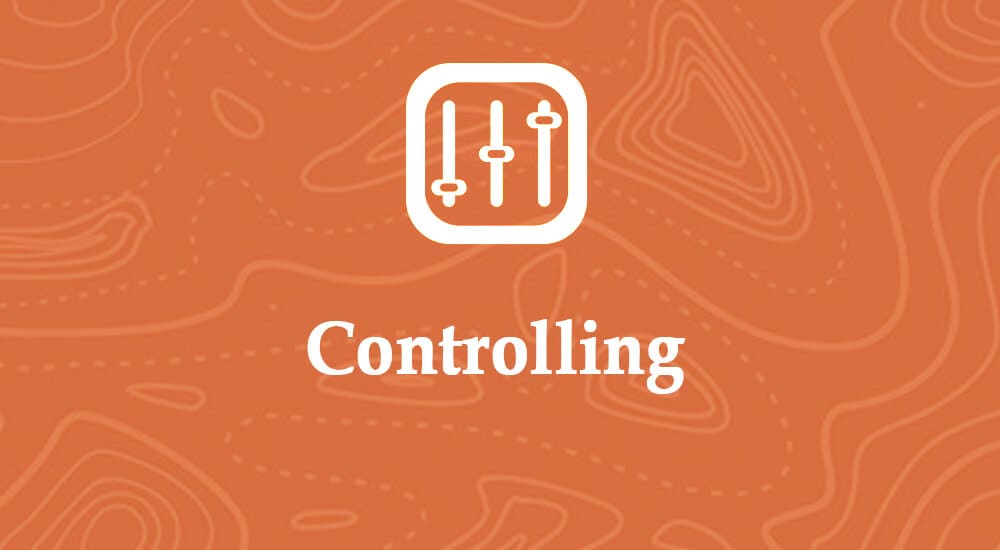Definition: Controlling is a management function. It is a process to help track the actual performance against the planned one. If the progress is not going as intended, management will take necessary action to bring it on track.
Controlling cascades from top-to-bottom in an organization or project, and is performed at all levels of the organization.
Control and planning are not the same. Though they are interrelated, planning is a forward-looking process that provides a course of action, while controlling is a backward-looking function to keep progress on track and provide feedback.
Controlling Types
Controlling can be of the following types:
- Feedback Control
- Concurrent Control
- Feedforward Control
- Behavioral Control
Feedback Control
Feedback helps managers review past performance and make amendments in the process to avoid further errors and discrepancies. It also helps them add new features based on consumer requests.
This is also known as post-action control.
Concurrent Control
This is monitoring the progress in real-time. Here, managers inspect the work on a job for compliance. If there is an error, they will take immediate corrective action.
Concurrent control is dynamic and requires prompt action. It keeps problems from escalating.
Feedforward Control
This is management communication from the top and provides information on any problem that may occur. They must immediately be prepared for it.
This is also known as predictive control.
Sometimes this control can be aggressive and cause changes in deviation and process.
Behavioral Control
This involves employee, manager, and departmental evaluation. Management can review everyone’s performance through a balanced scorecard, update and modify targets, and reward the best worker. This motivates everyone to perform better.
Monetary Control
This includes financial and non-financial control. Management must focus on the expense budget and the return on investment. They can assign a budget to each department and monitor budgetary performance.
Features of Controlling
- Brings consistency in performance
- Sets a precedence
- Helps organization achieve the goal
- Provides transparency
- Higher-quality product
- Higher productivity
Steps of the Controlling Process

- Establishing Baselines
- Measuring Performance
- Comparing the Progress
- Corrective Action (If Required)
Establishing Baselines
This is the first step towards establishing control. Once the baselines and standards are decided, an organization can track the actual performance against the planned progress.
Measuring Performance
Here, the actual performance is recorded.
Comparing the Progress
This is where the organization compares the actual performance against the planned progress.
Corrective Action
If progress is as planned, no action will be taken. But if actual progress has deviated from baselines, managers will take immediate corrective action to get it back on track.
Advantages of Controlling
- Improve work environment
- Higher-quality product
- Greater customer satisfaction
- More brand recognition
Summary
Controlling is an essential organizational process that helps reduce the gap between planned and actual performance. It ensures that assigned tasks are completed on time and within budget while meeting quality requirements.
